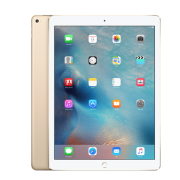Mobile Device Integration: Are Tablets a Dying Breed?
"With shipment volumes slowing over four consecutive quarters, the tablet market appears to be in transition."

- Smartphones and tablet computers have carved out a respectable slot for use by professionals in healthcare settings. However, if consumer trends are a leading indicator, hospital and health system executives will need to keep a watchful eye on these components of their mobile device integration strategy.

The 2014 HIMSS Analytics Mobile Devices Study found 28 percent of U.S. hospitals using smartphones, with an average of 169 devices deployed per hospital. In comparison, 24 percent of hospitals reported using tablets, with an average of 37 devices deployed per hospital. More than two-thirds of the 139 clinicians surveyed indicated that they use some combination of smartphone/tablet and desktop/laptop to access information.
Thus, the established healthcare niche. But what about broader consumer trends, which will ultimately govern manufacturers’ device development and support plans moving forward? The answer to that question will determine how products morph and which variations will be left to wither.
Worldwide tablet shipments have dropped for four consecutive quarters, according to numbers released by market intelligence firm International Data Corporation (IDC) on Oct. 29. For the third quarter of 2015, preliminary IDC data show a 13 percent decline in tablet shipments. The two leading tablet vendors — Apple and Samsung — were down 20 percent and 17 percent, respectively, in year-over-year tablet shipments as of the end of 2015’s third quarter.
"We continue to get feedback that tablet users are holding onto devices upwards of four years," said Ryan Reith, program director with IDC's Worldwide Quarterly Mobile Device Trackers. "We believe the traditional slate tablet has a place in the personal computing world. However, as the smartphone installed base continues to grow and the devices get bigger and more capable, the need for smaller form factor slate tablets becomes less clear. With shipment volumes slowing over four consecutive quarters, the market appears to be in transition."
IDC notes growing interest from vendors in new form factors, notably detachable tablets. While detachable tablets have managed just a single-digit percentage of the overall tablet market so far, IDC expects this share to “dramatically increase over the next 18 months.”
New research from IT advisory firm Gartner supports the theory of a tablet slowdown due to market saturation and projected transition to emerging form factors. Gartner’s survey of 19,000 consumers revealed that only 17 percent of consumers in mature markets (U.S., U.K., France, China, Brazil and India) intend to buy a tablet in the next 12 months.
Penetration of tablets has reached more than 66 percent of households in the U.S., according to Gartner, with more than 25 percent having two or more tablets.
"Unless new compelling innovation or incentives to upgrade tablets are created, the churn of the mature installed base will continue to fall," said Meike Escherich, principal research analyst at Gartner. "The worst-case scenario is that many tablet users will never upgrade or buy a new tablet as phablets and/or two-in-one convertible PCs — both with larger screens — envelop the benefits of a tablet. This scenario would result in real household penetration for tablets falling under 40 percent in mature markets."
Escherich also pointed to opportunities for two-in-one devices (tablets with detachable keyboards), with demand coming from tablet owners and dissatisfied laptop users, the latter of which have issues with battery life, weight and boot-up times. “Others see the versatility of a hybrid meeting the needs of a tablet and a notebook, especially with the benefit of a keyboard,” she added.
At the same time, Gartner predicts that smartphone demand will split between two screen sizes: smartphones with 5-inch screens and “phablets” with screen sizes of 5.5 inches and larger. The smaller size affords better portability (i.e., in a lab coat pocket), while the phablet offers “a more compelling mobile content-consumption experience” without giving up phone capability, noted Escherich. “Some budget-constrained consumers will prefer single-device ownership and will choose phablets as combining the best of both worlds.”
